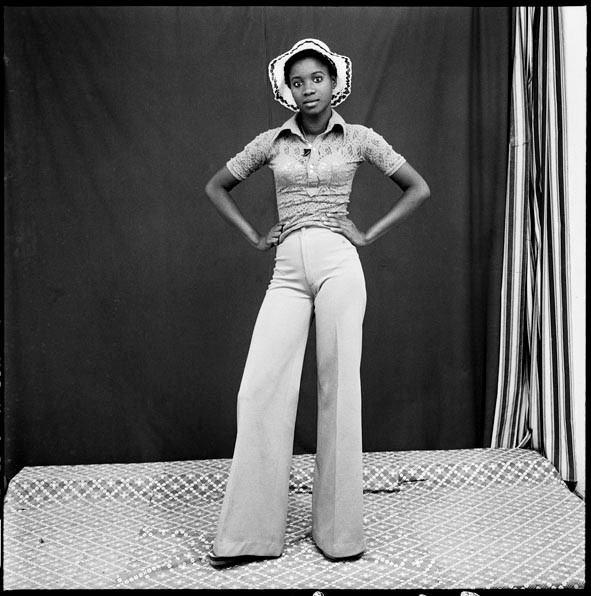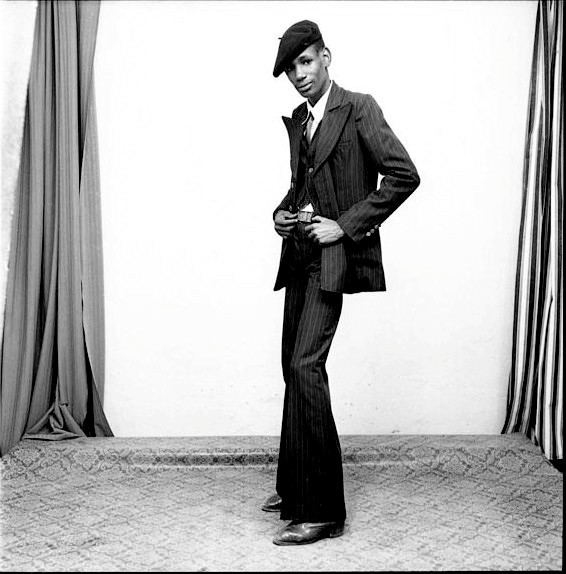We turn to Studio Malick in 1960s Bamako for lessons in style, posturing and self-determination
Having apprenticed under leading society photographer Gérard Guillat and learning his trade at colonial balls and banquets, in 1962 Malick Sidibé opened Studio Malick: a photographic studio located in Bamako, Mali. The decades that followed saw both the studio and Sidibé's documentary photography rise to a global renown, his work capturing an exuberant period of liberation in a country that had lived under colonial rule for centuries.
What Sidibé offered was a space where people were afforded agency over their image, rather than being subject to a western lens that projected an exoticism or poverty upon them. The resulting pictures were "Africans for Africans". But, as well as that, the studio was a place where people came to hang out – as he told The Guardian in 2010, "often it was like a party. People would drop by, stay, eat. I slept in the developing room. They'd pose on their Vespas, show off their new hats and trousers and jewels and sunglasses. Looking beautiful was everything. Everyone had to have the latest Paris style. We had never really worn socks, and suddenly people were so proud of theirs, straight from Saint Germain des Près!" So, in honour of some of the most iconic fashion images we know, we are turning to Studio Malick for the lessons that we can learn from Sidibé's clientele.

Posture is key
Although Sidibé carefully and deliberately instructed the pose of his subjects, the resulting images always appear to capture a moment rather than feeling static or staged. An early love for Eugène Delacroix, sparked when he was given a book as a prize at school, Sidibe went on to spend four years studying art at École des Artisans Soudanais on command of the colonial governor, and his formal education is particularly apparent in his understanding of composition and posture.

James Brown is King
Speaking to American Suburb X, Sidibé explained, "It wasn’t so much our independence as it was Western music that changed many things during that time. Music was really the revolution because after 1957, rock music, hula-hoop, swing came to the country. Music was a true revolution in Mali." After making a name for himself by documenting parties and dances (his camera was lighter than his contemporaries like Seydou Keita whose weighty equipment restricted their mobility), the inclusion of specific records or dancing within his studio photography was grounded in a Malian cultural revolution that combined west African identity with western influences like James Brown.

Motorbikes are always cool
The appearance of motorbikes and Vespas within portraits is a recurrent theme in Sidibé's studio work – young Malians would arrive on them and then want them included in the images to advertise their modernity. He explained to Jerome Sother in 2008 that "People came by motorbike or Vespa. I was also lucky at that time because when I opened the studio, electricity was becoming available. And to be photographed where there was electricity, people enjoyed that. Electricity was something of a luxury. So people would come to my studio because it had electricity."

Dress up
The party atmosphere of his studio inspired groups of young people to arrive together, to hang out and to get a print that showed them and their friends at their finest. One of the greatest elements of Sidibé's work is the personal styling that went into every picture; keen to show off new clothes, new looks and a new identity, his subjects are frequently wearing the latest trends – with sunglasses worn indoors a popular feature. It is dressing up at its greatest, with everyone proud of the outfits that they have assembled and reminding us that there is no shame in trying to look cool if the result is this good.

Incorporate different cultural references
Mali had previously been a French colony, and Sidibé's work documents a period of major political change that is reflected in the clothing of his subjects. Combinations of European fashions, west African prints and, here, even a traditionally Francophile beret, show the amalgamation of a variety of cultural references that ensure the outfits (and their wearers) stand the test of time; they look just as cool in 2015 as they did in the 60s.
Photography by Malick Sidibé will be on show at Photo London, Somerset House, on May 21-24.






